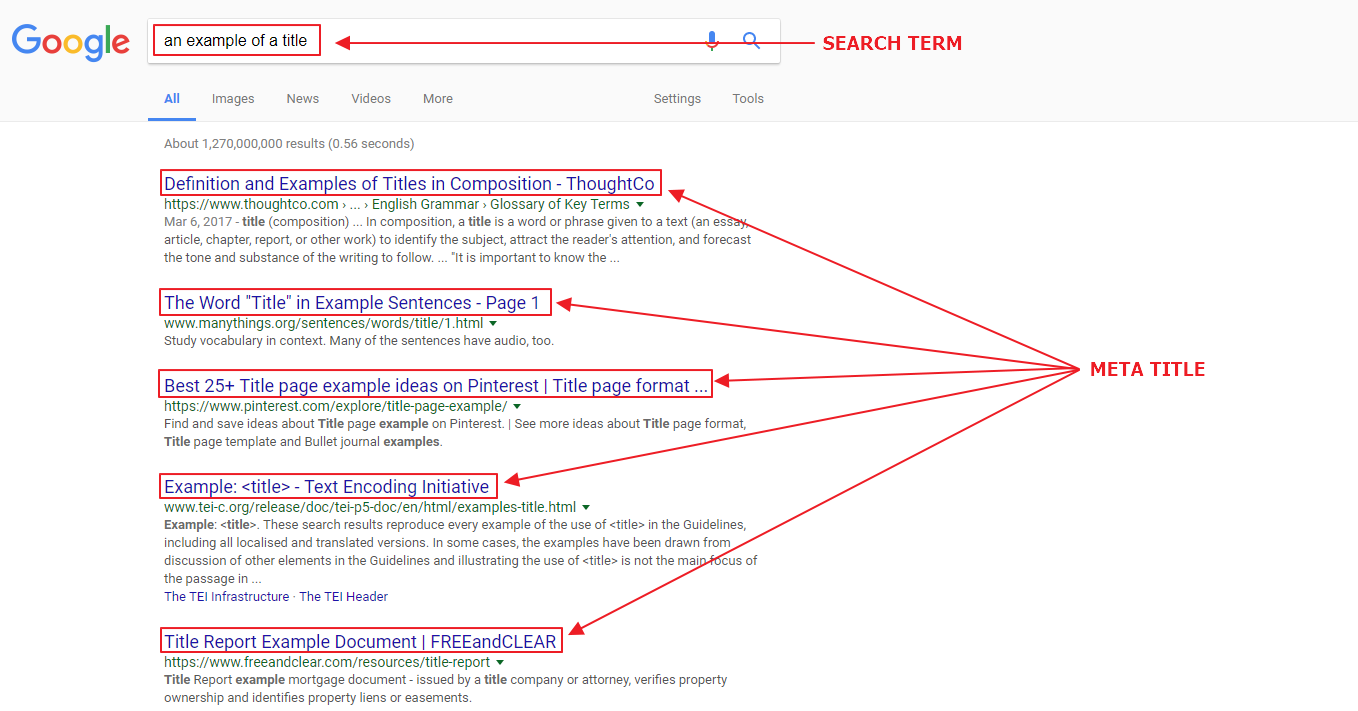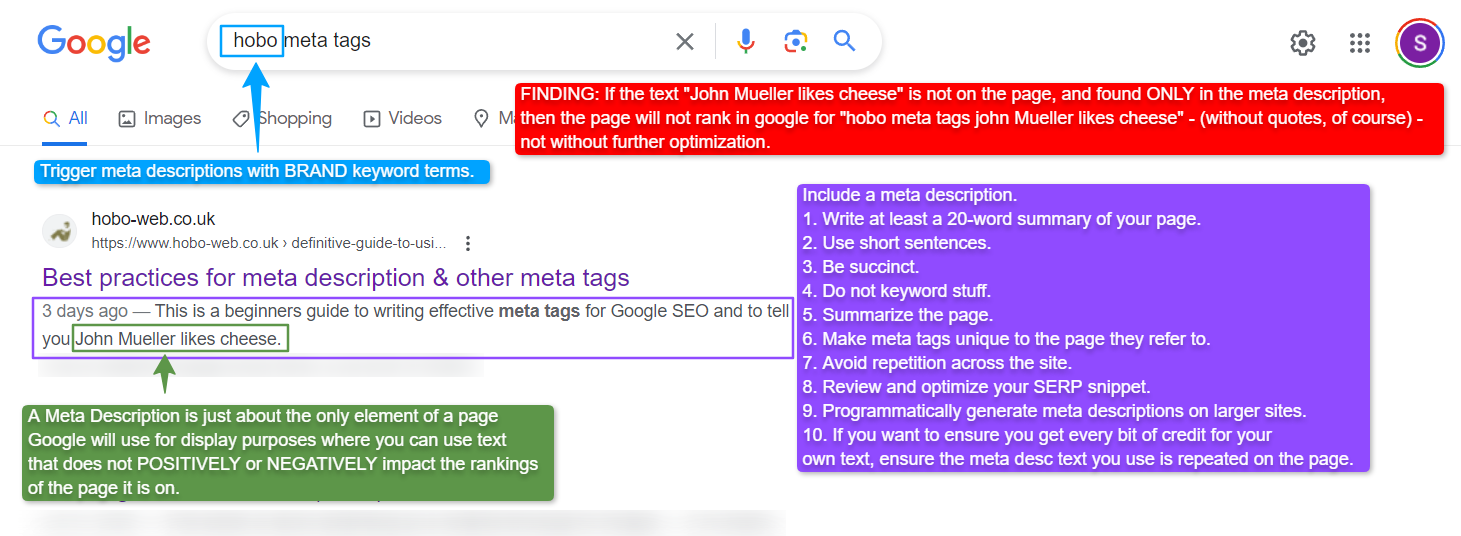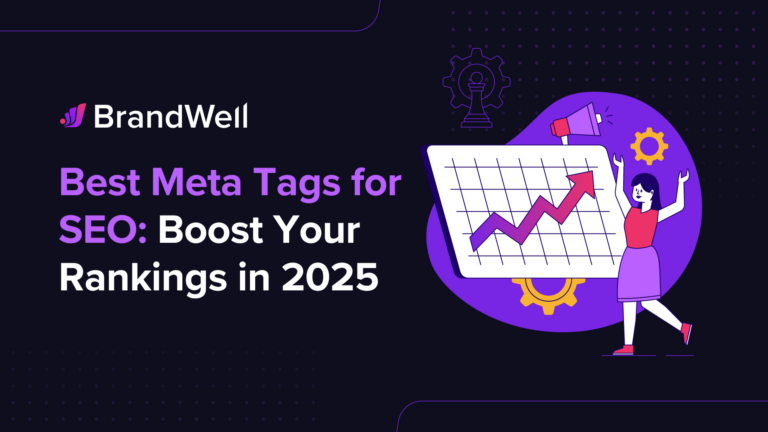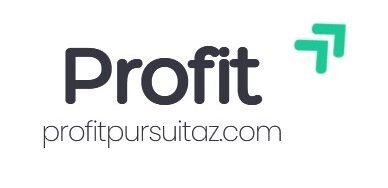Best Meta Tags for Seo: Boost Rankings Instantly
Meta tags play a vital role in SEO. They help search engines understand your content.
In the world of digital marketing, getting noticed online is key. Meta tags act as your website’s first impression to search engines. They guide search engines in indexing and ranking your site. Without the right meta tags, your content may not reach its audience.
These tiny snippets of code are powerful tools. They can influence how your site appears in search results. They can also impact how users perceive your page. Good meta tags can enhance visibility and attract more visitors. But which meta tags are essential for SEO success? Understanding their importance is the first step to optimizing your site. Let’s explore the best meta tags to boost your SEO efforts.
Introduction To Meta Tags
Meta tags play a vital role in search engine optimization (SEO). They are snippets of text that tell search engines about the content of a web page. These tags don’t appear on the page itself but in the page’s code. Understanding meta tags can improve your website’s visibility and ranking. Let’s explore their importance and how they influence rankings.
Importance For Seo
Meta tags help search engines understand your site’s content. They guide search engines on how to display your page in search results. Good meta tags can increase click-through rates by attracting users. They act like a summary, enticing users to visit your site.
How They Influence Rankings
Meta tags impact how search engines rank your pages. They are not the sole factor, but they matter. The right meta tags can improve search engine rankings. Search engines read these tags to evaluate relevance. Relevant tags can boost your page’s visibility in search results.
Title Tags
Title tags are crucial for SEO. They guide search engines and users to your content. A well-crafted title can boost your site’s visibility. It helps in attracting more clicks and improving rankings. Understanding title tags is essential for successful digital marketing.
Crafting Effective Titles
Effective titles are concise and relevant. They should reflect the content accurately. Include primary keywords without stuffing. Aim for a length of 50-60 characters. This ensures visibility in search results. The title must be engaging to attract users. Avoid jargon and complex words. Keep it simple and direct.
Best Practices
Use action words to create interest. Such words can encourage clicks. Place important keywords at the beginning. This helps search engines prioritize your content. Avoid duplicating titles across pages. Each title should be unique and descriptive. Consider the user’s intent while crafting titles. Match their search queries for better results.
Meta Descriptions
Meta descriptions are crucial for SEO. They provide a brief summary of a webpage’s content. Search engines display these summaries in search results. A well-crafted meta description can attract more visitors. It helps users decide if they want to click on the link.
Compelling Summaries
Creating compelling summaries is essential. These summaries must capture the essence of your content. They should be clear and concise. Use active language to engage readers. Avoid complex terms that confuse users. A compelling meta description encourages clicks and boosts visibility.
Impact On Click-through Rates
Meta descriptions directly affect click-through rates. A good description increases interest in your page. Users are more likely to click if they understand what they will find. This enhances engagement and improves your page’s ranking. Accurate and appealing descriptions make a difference.

Credit: www.yellowhead.com
Header Tags
Header tags play a crucial role in organizing web content. They help search engines understand the structure of a page. Proper use of header tags can improve your site’s SEO. They guide readers through your content, enhancing user experience.
Structure And Hierarchy
Header tags create a logical structure for your content. Start with an H1 tag for the main title of the page. Use H2 tags for major sections or topics. H3 tags break down H2 sections into smaller parts. This hierarchy continues with H4, H5, and H6 tags. Each level provides more detail, creating a clear and organized layout.
Using header tags effectively makes your content easy to read. It helps both users and search engines to navigate your site.
Seo Benefits
Proper header tag use can boost your SEO. Search engines prioritize content with a clear structure. Header tags signal important topics and keywords. They tell search engines what your page is about.
Using keywords in header tags can improve your page rankings. It helps search engines connect your page to relevant search queries. This leads to more visibility in search results.
Header tags also improve user experience. Users can quickly find information they need. This reduces bounce rates and keeps visitors on your page longer.
Alt Text For Images
Alt text for images boosts SEO by describing visuals to search engines. It improves accessibility for visually impaired users. Effective alt text uses relevant keywords naturally, enhancing discoverability.
Alt text for images plays a critical role in SEO. It provides a text alternative for search engines and visually impaired users. This boosts your website’s accessibility and search engine ranking. Writing effective alt text requires balance. It should be descriptive but concise. Let’s explore how to craft alt text that enhances both SEO and accessibility.Descriptive Texts
Descriptive texts in alt text describe the image content. This helps search engines understand the image context. Use clear and simple language. Avoid keyword stuffing. Instead, focus on the image’s main subject. For example, use “golden retriever playing in a park” instead of “dog”. This specificity improves SEO and user experience. It paints a clear picture for those unable to see the image.Enhancing Accessibility
Alt text enhances website accessibility. It supports screen reader technology for visually impaired users. This makes your site more inclusive. When writing alt text, consider what the image conveys. Describe its purpose or action. Keep it short, yet informative. Accessibility is not just a trend. It is a necessity for a broader audience. Plus, it aligns with web standards and practices. Remember, accessible content benefits everyone.
Credit: www.hobo-web.co.uk
Canonical Tags
Canonical tags are essential for SEO. They guide search engines to your preferred webpage version. This helps avoid confusion and ensures proper indexing. These tags are simple HTML elements. They tell search engines which page to prioritize. Without them, duplicate content issues arise.
Preventing Duplicate Content
Duplicate content confuses search engines. It can hurt your site’s ranking. Canonical tags solve this problem. They tell search engines the main version of your page. This prevents multiple pages from competing for attention. Your chosen page gets the credit. This boosts your site’s visibility. Duplicate content issues diminish with proper use.
Seo Advantages
Using canonical tags improves your site’s SEO. They consolidate link metrics to your main page. This strengthens your page’s authority. Search engines recognize the main page easily. This improves your site’s ranking. It also enhances user experience. Visitors find the intended page without hassle. Your site’s credibility grows with consistent use.
Robots Meta Tags
Understanding robots meta tags is crucial for effective SEO. These meta tags instruct search engines on how to crawl and index your web pages. They can significantly influence how your site appears in search results. Without proper utilization, you might miss out on valuable traffic and visibility. Let’s dive into how robots meta tags can guide search engines and impact indexing and following.
Guiding Search Engines
Robots meta tags act as your site’s traffic signals. They inform search engines whether to crawl a page or skip it. You can use them to control the visibility of specific pages. Not every page needs to be indexed, and robots meta tags help you make these decisions.
Consider your site structure. Does every page need to be searchable? Perhaps you’ve got pages under development or duplicates. Robots meta tags provide the flexibility to manage these situations. It’s like having a remote control for your website’s search engine interaction.
Indexing And Following
With robots meta tags, you can specify whether a page should be indexed or followed. Indexing involves whether the content should appear in search results. Following refers to whether the links on the page should be tracked.
Use the “noindex” tag for pages that shouldn’t appear in search results, like login pages. The “nofollow” tag is useful for links that shouldn’t pass authority, like affiliate links. This control empowers you to shape how search engines perceive your site.
Think about the implications of these tags. Are you missing out on indexing valuable content? Or maybe you’re inadvertently sharing link juice through unnecessary links. By carefully managing robots meta tags, you can optimize your site’s search presence and influence.
What strategies do you employ to control your site’s indexing and following? Have you considered the impact of robots meta tags on your site’s SEO? Take charge of your site’s visibility and search engine interactions today.

Credit: brandwell.ai
Social Media Meta Tags
Social media meta tags enhance your content’s visibility on platforms like Facebook and Twitter. These tags help present your content attractively when shared. Using them correctly can significantly increase engagement and visibility.
Open Graph Tags
Open Graph tags are essential for sharing on Facebook. They define how your content appears when shared. These tags include title, description, and image. A well-defined Open Graph tag can make your post stand out.
Title tags should be concise and intriguing. They catch the viewer’s attention quickly. Descriptions should summarize your content effectively. They provide a snapshot of what to expect. Images should be relevant and high-quality. They create a visual impact and attract clicks.
Improving Shareability
Optimizing your meta tags improves shareability. This means more clicks and engagement. Ensure your tags are relevant to your content. This alignment boosts user interest and interaction.
Use clear and engaging language. Avoid jargon or complex terms. Make your content easy to understand. This encourages more shares and broader reach.
Regularly review and update your tags. This keeps your content fresh and relevant. It helps maintain interest over time.
Common Mistakes To Avoid
Understanding the significance of meta tags for SEO is crucial, but equally important is knowing the common pitfalls that can derail your efforts. As you aim to optimize your website, it’s essential to steer clear of these mistakes to ensure your pages rank effectively on search engines. Let’s dive into some frequent missteps and how you can avoid them.
Overstuffing Keywords
Keyword stuffing was once a go-to strategy, but it’s now a red flag. Overloading your meta tags with keywords can lead to penalties from search engines, hurting your site’s visibility. Imagine reading a sentence that repeats the same word unnecessarily; it feels forced and unnatural.
Instead, focus on relevance and readability. Use keywords thoughtfully to enhance your content, not overwhelm it. Ask yourself: Does this keyword add value, or is it just filling space? Prioritize quality over quantity.
Ignoring Updates
SEO is a dynamic field, with algorithms constantly evolving. Ignoring updates can leave your site lagging behind. It’s easy to fall into the trap of setting meta tags once and forgetting about them, but that can be a costly mistake.
Stay informed about the latest SEO trends and algorithm changes. Regularly review and refine your meta tags to keep them aligned with current best practices. Consider subscribing to SEO blogs or forums for timely insights. How often do you update your meta tags? Make it a part of your routine.
By avoiding these common mistakes, you can enhance your site’s SEO performance and ensure your content reaches its intended audience effectively. Remember, smart optimization is about balance and staying informed—key elements in the ever-changing world of SEO.
Conclusion
Choosing the right meta tags boosts your SEO efforts effectively. Simple yet powerful. Properly crafted tags help search engines understand your content. This leads to better visibility. The right keywords in meta tags attract more visitors. Remember, clarity is key in creating tags.
Avoid complicated phrases. Use language that your audience easily grasps. Keep tags relevant to your content theme. Consistency in your approach brings steady results. Regular updates ensure your site stays fresh. Always monitor performance. Adjust as needed for improvement. Meta tags are a vital part of your SEO toolkit.
Use them wisely for best results.
